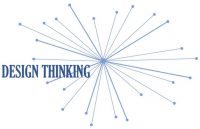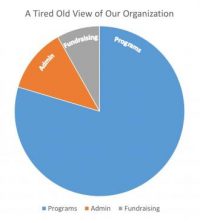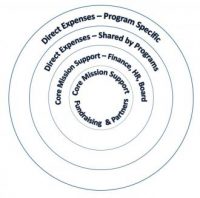Large organizations typically have a communications department and a risk management plan to address crises in leadership, physical plant, financial stability and public perception. Most of our smaller nonprofit organizations don’t have a formal plan, much less agreed upon strategies for what to do in the first seventy-two hours after a crisis develops.
 Executive directors, Board members and key staff need to spend a little time to occasionally talk about risk, whether your liabilities are in the forefront of consciousness or not, and what approaches you and others should take. Start with a review of the organization’s policies, many of which are probably already in place.
Executive directors, Board members and key staff need to spend a little time to occasionally talk about risk, whether your liabilities are in the forefront of consciousness or not, and what approaches you and others should take. Start with a review of the organization’s policies, many of which are probably already in place.
- What kind of risks does this organization face? How do we serve the public? Who are our clients? Children? Young People, Frail Elderly, At-risk adults, Homeless, Animals? Do we have adequate control procedures for handling funds?
- How likely is it that we might have an emergency? How severe could it become?
- What should we do in the immediate hours after a crisis to address issues of communication, interim management for delivery of services and financial oversight?
We have identified some major risk factors (Crisis in Leadership, Responding to Physical Risk, Financial Jeopardy, Crisis in Credibility and Reputation) and urge that you and your key staff and board members have a risk management plan to reduce the likelihood of catastrophic events and a set of strategies to implement during the first 72 hours of an unthinkable event.
It isn’t important to identify every possible risk, but recognize where the likely risks are and have a strategic plan for what to do for the major risks that may impact your organization.
The most dangerous time during an unlikely death, a physical threat, a financial crisis or a major challenge to your organization’s credibility, is while the event is occurring. This is time when you need space to gather information to make informed decisions, ensure that the board and staff speak with one voice and that the core of the organization has a plan for regaining its footing in the community. Creating this space is more straightforward if you have talked with one another about a plan, practiced some strategies for dealing with hypothetical situations and don’t compound a bad situation by not having a plan to reduce risk and a set of strategies when a risky situation arises.
Crisis in Leadership
As outlined in a 2016 Board Source article on planning for succession, it is vital for the organization to also have an emergency plan in place in the event an Executive Director (ED) or CEO resigns abruptly, becomes seriously ill, is fired, or is otherwise unable to lead the organization. There is considerable advice on Chief Executive Succession plans. However, for this conversation, look for articles on emergency leadership transition plans. This Article covers communications, financial oversight, interim management and executive search.
Responding to Physical Risk
Fire is an ever present danger in Northern California, as several of our local nonprofits who were required to evacuate in our 2017 wild fire season can attest. The national news reminds us of every day about potential physical risks from individuals, organizations and the environment. While there is a limited amount that we can do to prepare, consider some of the following questions and whether your organization has answers to them.
- During a period of physical risk, have we identified what needs to happen first -for the people, the animals, the art, mission critical records, and our organization’s facilities? Will it be necessary to relocate?
- Is our primary service location safe for staff and volunteers? If so, are they a help or a hindrance in the current situation? How do we contact them? Who contacts them?
- How do we deal with inquiries from outside? Do we just let the phone ring because we don’t have answers? Can we safely use social media to acknowledge a situation and urge people to not over-react but stay tuned as the situation develops? Creating time for key people to develop a response to the situation and alert others who can help us is critical.
- How ready are we, right now, to respond to a physical crisis in an orderly fashion?
Financial Jeopardy
As much as we don’t want to think financial crises will occur, every nonprofit needs a contingency plan for the possibility of insolvency created by embezzlement, financial institution failure, or a negative organizational audit.
- Does the organization have a fiscal plan and multiple signatories on the organization’s checking accounts to continue business in the absence of the E.D.?
- Is the organization’s financial health a standing board agenda item, and not just the purview of a finance manager or board treasurer? How can we train ourselves to make better use of financial data? Do we have regular audits by uninterested/independent entities?
- Do we have an attorney, CPA, or other qualified person to advise the board in the event of a financial calamity? Is our organizational and personal insurance up to date? Do we know what it covers?
- Accountability and transparency generate credibility and confidence among donors, the life blood of a nonprofit business. Does our organizational culture foster financial leadership on both staff and the board?
For more information, see Financial Leadership for Nonprofit Executives, by J Bell and E Schaffer, published by Compass Point. See a listing of their workshop HERE. Also see the National Council of Nonprofits resource on governing board’s fiduciary duty to ensure that the assets of a charitable nonprofit are used in accordance with donors’ intent, and in support of the charitable mission. Financial management strategies and suggested policies can also be found.
Crisis in Credibility and Reputation
Perhaps the crisis is not a critical event at all. It is an awareness that something is powerfully wrong in the organization. Perhaps there is a rumor circulating in the organization and/or community, or staff dissension that has risen to the level of community knowledge which is jeopardizing the work of the organization. As distasteful as these situations are, there are occasions when leadership is either not aware of the situation and didn’t knowingly contribute to it, but needs to participate in managing its resolution for the health of the organization.
Hypothetically, one of our employees has been involved in a legal situation and was removed from the office by the authorities who also impounded the staffer’s computer. How do we respond? We are required by law to protect privacy. However, this situation has temporarily disrupted the work environment and other staff are immediately turning to social media with a tidbit for the gossip mill.
- What to do? How do we handle this situation to both protect privacy, not be paternalistic about staff behavior, and yet still protect the community’s trust in the organization?
Initially, it is important to let staff know that the situation is under control and that we don’t yet have the facts. As a point of discussion, we want to be forthcoming to the extent possible. We want to be truthful without violating privacy or taking sides. We also want to create space by using our agreed upon strategies to reassure our clients, constituents and employees who are not involved that steps are being taken to contain the situation.
- What about the media? We can ask staff to not post on social media until we know what is going on. We may need some time, but we will alert them and the media of appropriate facts as soon as they are verified. Remind everyone that we have a plan in place to cover services until the situation returns to normal. For the moment, all questions can be directed to (name a person).
In Summary
Each of these scenarios – loss of leadership, physical risk, financial jeopardy and a challenge to organizational credibility share the need for the organization to have contingency plans and practice opportunities for staff to discuss:
- Who speaks for the organization in the immediate moment while the facts are still being determined?
- What strategies are we going to use to determine the facts?
- How will we inform our staff and constituents of this information?
- How will this unforeseen event affect delivery of services and for how long? Are there arrangements we can make to see that any loss of service has a minimal impact on clients, even if that means cooperating with another agency that we normally compete with?
- What is it going to take, structurally, corporately, physically, and psychologically, to bring us back to full capacity?
- Who can help us?
When the immediate crisis has abated, this may be when we want the newspaper and the media to come in, to hear the evidence, be filled in on the plan for next steps, and help the community look forward to us getting back to full capacity as soon as possible.
Having a communications policy to address these issues is a beginning, but making sure everyone is aware of it, and having conversations to occasionally think about the unthinkable will help us have a mindset to be ready if something does occur. In brief, we need to rehearse in our collective minds, what kinds of things we would need to address when circumstances are really uncontrollable.
Hopefully, they won’t occur often!
 With Thanksgiving tomorrow, the official Giving Season begins as we approach the Global Day of Giving – #GivingTuesday (November 27th) After 2 days of deals, we look to give back.
With Thanksgiving tomorrow, the official Giving Season begins as we approach the Global Day of Giving – #GivingTuesday (November 27th) After 2 days of deals, we look to give back.




 imagination, intuition, and systemic reasoning, to solve complex problems and find desirable solutions.
imagination, intuition, and systemic reasoning, to solve complex problems and find desirable solutions. The Center for Nonprofit Leadership is excited and honored to bring Kay to Nevada County. Kay Sprinkel Grace is Principal and Founder of Transforming Philanthropy. Since 1989, she has served as Principal of her own firm, has published seven books and countless articles, won numerous awards, including the 2013 Henry A. Rosso Medal for Lifetime Achievement in Ethical Fundraising, as well as being one of the first AFP Distinguished Fellows. She also serves on a number of boards, including the Philharmonia Baroque Orchestra in San Francisco. To learn more about Kay, visit her
The Center for Nonprofit Leadership is excited and honored to bring Kay to Nevada County. Kay Sprinkel Grace is Principal and Founder of Transforming Philanthropy. Since 1989, she has served as Principal of her own firm, has published seven books and countless articles, won numerous awards, including the 2013 Henry A. Rosso Medal for Lifetime Achievement in Ethical Fundraising, as well as being one of the first AFP Distinguished Fellows. She also serves on a number of boards, including the Philharmonia Baroque Orchestra in San Francisco. To learn more about Kay, visit her 



 Instead, we need to think about our investment in key infrastructure as part of our core mission support. Core mission support includes: financial, human resource and Board support. Core mission support also supports funding raising and work with our partners. In addition, we have program specific direct expenses and expenses shared by programs. These graphics can be found at
Instead, we need to think about our investment in key infrastructure as part of our core mission support. Core mission support includes: financial, human resource and Board support. Core mission support also supports funding raising and work with our partners. In addition, we have program specific direct expenses and expenses shared by programs. These graphics can be found at  Board members and staff are told they have fiduciary responsibility and accountability for the nonprofit organization they are serving, but do most really understand what that means? What is financial oversight?
Board members and staff are told they have fiduciary responsibility and accountability for the nonprofit organization they are serving, but do most really understand what that means? What is financial oversight?
 Executive directors, Board members and key staff need to spend a little time to occasionally talk about risk, whether your liabilities are in the forefront of consciousness or not, and what approaches you and others should take. Start with a review of the organization’s policies, many of which are probably already in place.
Executive directors, Board members and key staff need to spend a little time to occasionally talk about risk, whether your liabilities are in the forefront of consciousness or not, and what approaches you and others should take. Start with a review of the organization’s policies, many of which are probably already in place.
